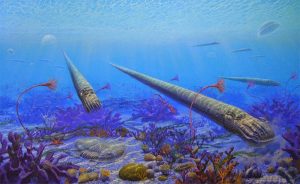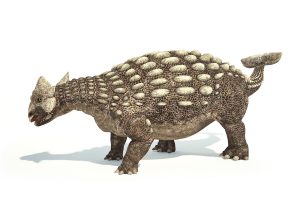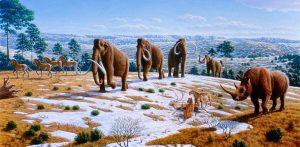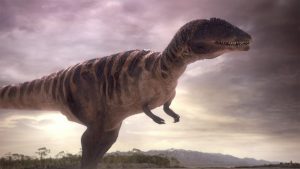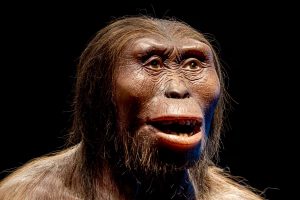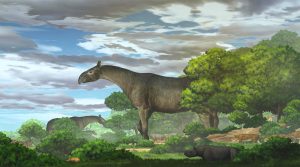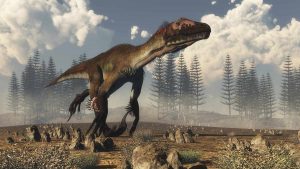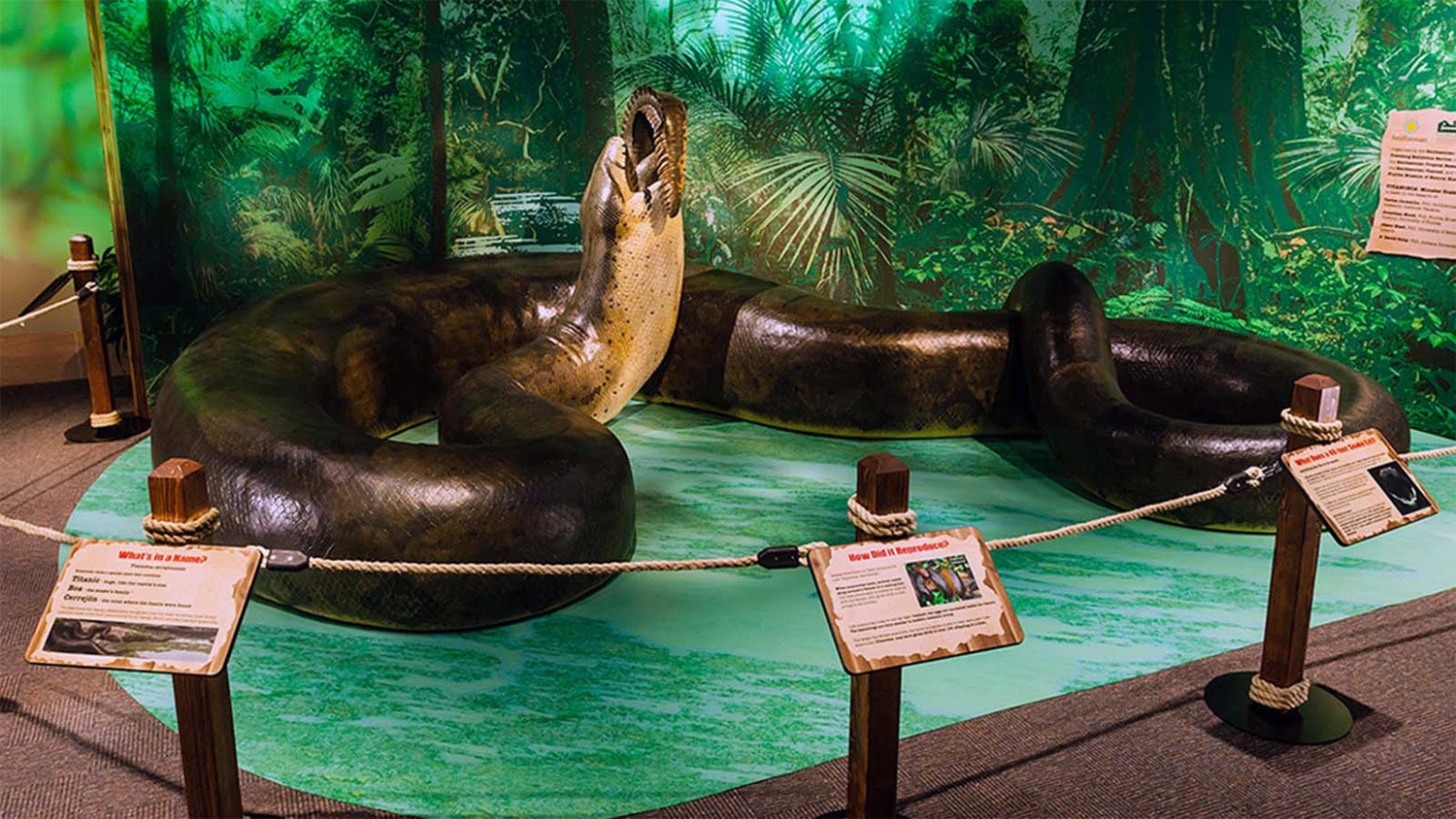
28 interesting facts about Titanoboa (prehistoric snake)
- 👁️ 539
Titanoboa, the colossal prehistoric snake, has fascinated scientists and the public alike since its discovery. Living approximately 58 to 60 million years ago during the Paleocene epoch, Titanoboa cerrejonensis is the largest snake ever discovered, providing invaluable insights into the post-dinosaur era’s tropical ecosystems. This gargantuan reptile roamed the rainforests of what is now Colombia, dominating the top of the food chain. The discovery of Titanoboa’s fossils has shed light on the climate and ecological dynamics of ancient South America, revealing a world far different from today’s. Here are 28 interesting and informative facts about Titanoboa that highlight its significance and the mysteries it unveils about our planet’s past.
- Titanoboa could grow up to 42 feet (about 13 meters) in length.
- It is estimated to have weighed around 1,135 kilograms (2,500 pounds), making it the heaviest snake ever known.
- The first fossils of Titanoboa were discovered in the coal mines of Cerrejón in La Guajira, Colombia.
- Titanoboa’s size suggests it lived in a much warmer climate, as larger reptiles are found in hotter regions.
- This prehistoric snake’s diet likely consisted of large fish and possibly crocodilians.
- Titanoboa’s vertebrae are significantly larger than those of any living snake.
- The discovery of Titanoboa was first reported in 2009, making it a relatively recent find in paleontology.
- Its enormous size indicates Titanoboa was an apex predator in its ecosystem.
- Titanoboa lived approximately 5 million years after the extinction of the dinosaurs.
- The snake’s name, Titanoboa, means “titanic boa,” reflecting its massive size and classification within the boa family.
- Scientists estimate the average temperature of Titanoboa’s habitat was about 30 to 34 degrees Celsius (86 to 93 degrees Fahrenheit), warmer than today’s tropical rainforests.
- Titanoboa is believed to have spent much of its time in water, similar to modern anacondas.
- The thickness of Titanoboa could have reached nearly 1 meter (3 feet) in diameter.
- Despite its size, Titanoboa would have had natural predators, including giant crocodilians and large predatory birds.
- The fossilized remains of Titanoboa’s prey, including giant turtles and crocodiles, were found in the same area, indicating a rich biodiversity.
- Researchers used the size of Titanoboa’s vertebrae to estimate its total length and weight.
- The snake’s massive size has led scientists to reevaluate the thermal regulatory mechanisms of prehistoric reptiles.
- Titanoboa’s existence challenges previous assumptions about the limitations of snake size and physiology.
- The environment of Titanoboa was a rainforest, indicating that such ecosystems have been present in South America for millions of years.
- No complete skeleton of Titanoboa has been found; its size is estimated based on fossilized vertebrae and ribs.
- The humid, warm climate of Titanoboa’s habitat contributed to the preservation of its fossils.
- Titanoboa’s discovery has sparked interest in finding more prehistoric giant snakes.
- The Smithsonian Institution created a life-size replica of Titanoboa for an exhibit, showcasing its immense size to the public.
- Titanoboa is part of a lineage of snakes that evolved in South America, isolated from other continents.
- Its fossils provide clues about the ecosystem’s dynamics and the evolutionary history of snakes.
- The period following the dinosaurs’ extinction saw the rise of mammals and reptiles like Titanoboa, filling the void left by dinosaurs.
- Titanoboa’s existence indicates that prehistoric life forms were more varied and larger than previously thought.
- The study of Titanoboa helps scientists understand how climate affects the evolution of species over geological time scales.
Titanoboa’s discovery has significantly contributed to our understanding of prehistoric life and the evolutionary history of reptiles. This colossal snake not only redefines our perception of the past but also provides valuable insights into the climatic conditions of ancient Earth. As research continues, Titanoboa remains a symbol of the incredible diversity and adaptability of life on our planet, reminding us of the ever-changing nature of life through the ages.
